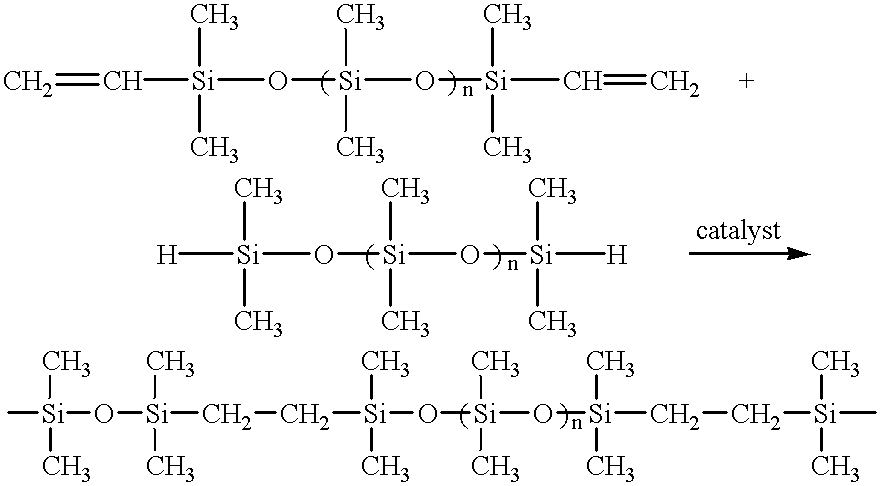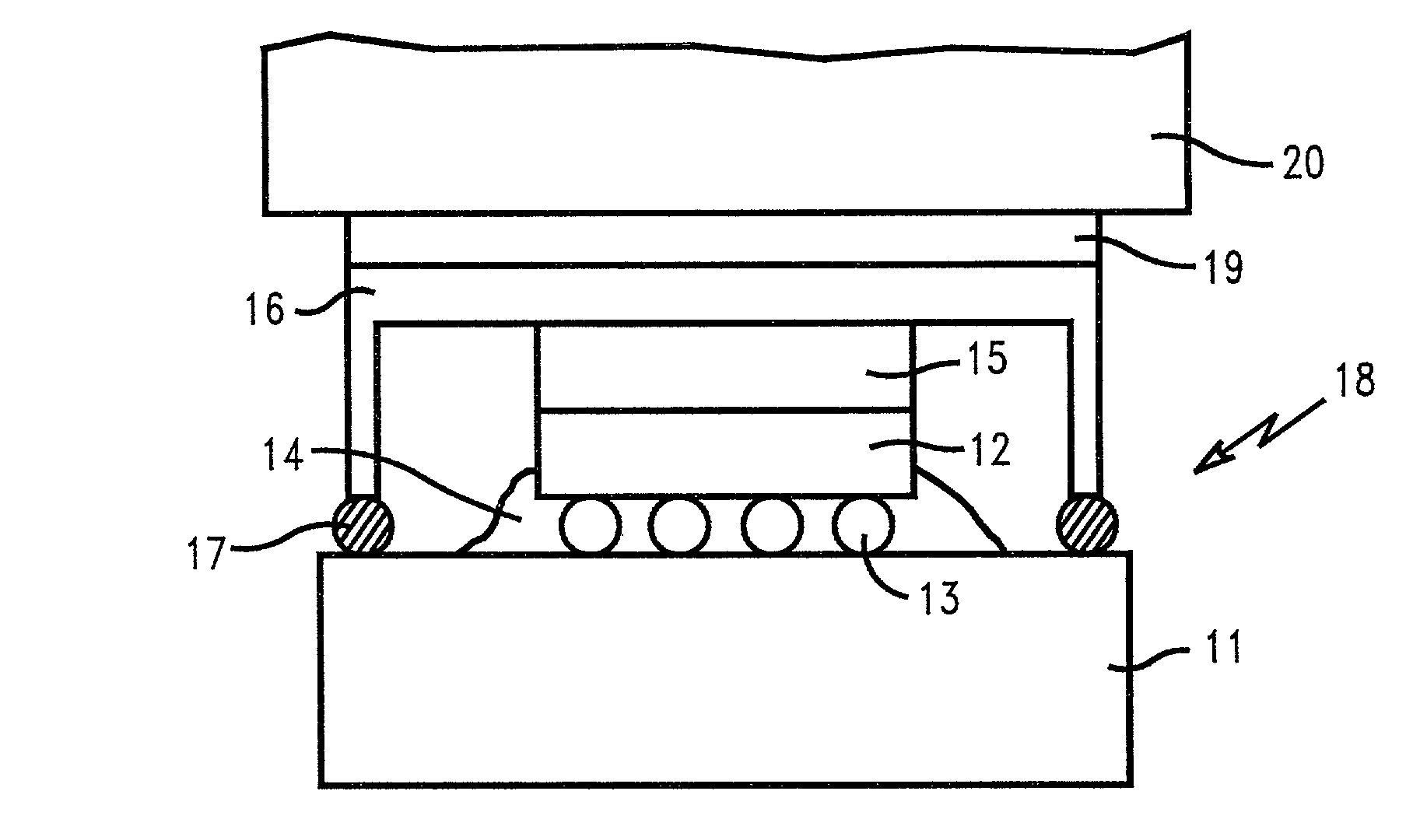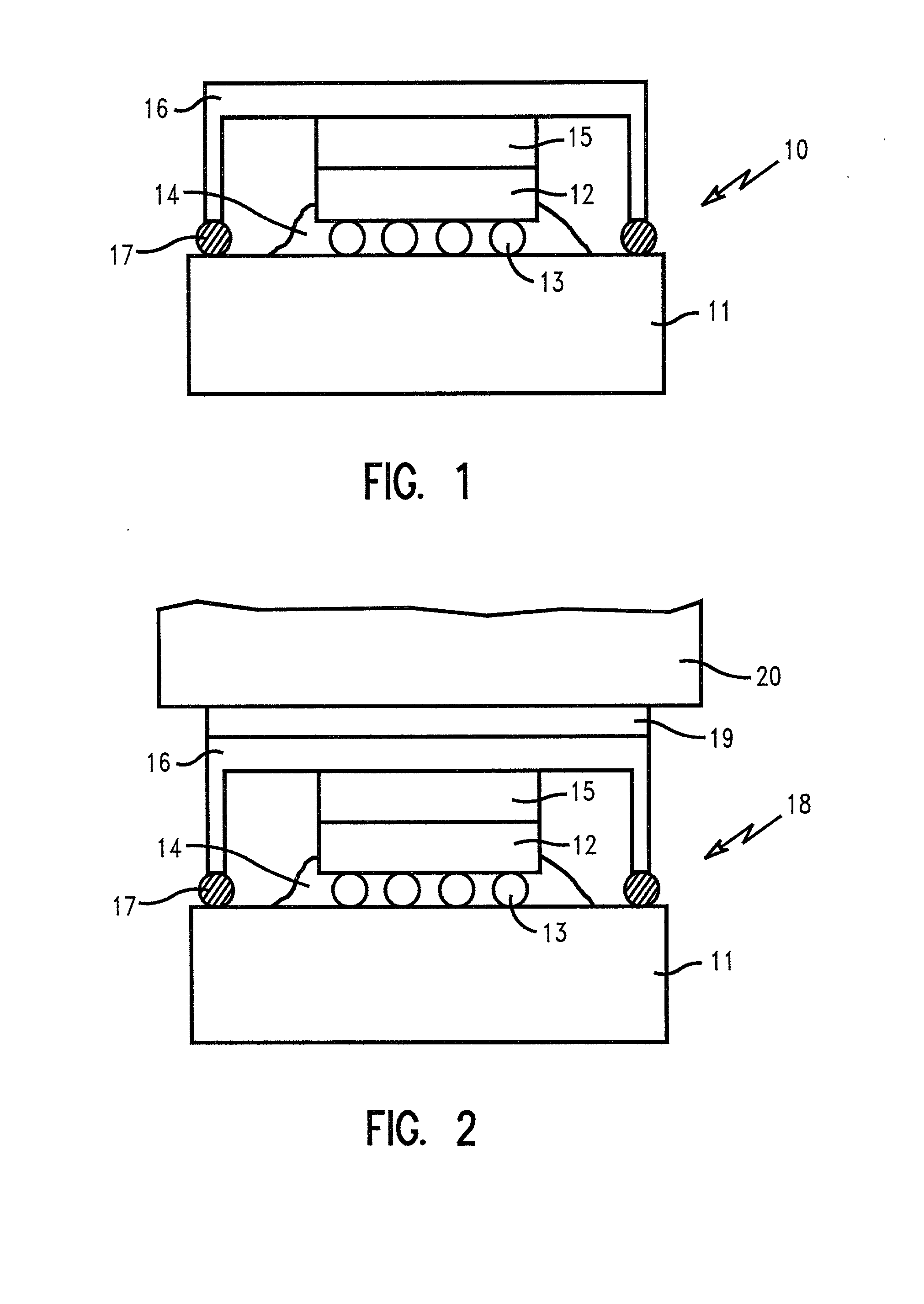Removal of cured silicone adhesive for reworking electronic components
a technology of electronic components and silicone adhesives, which is applied in the direction of cleaning using liquids, semiconductor/solid-state device details, inorganic non-surface active detergent compositions, etc., can solve the problems of inability to provide residue-free substrate surfaces, inability to meet the requirements of mechanical removal by scrapping off silicone adhesives/encapsulants, and inability to meet the requirements of mechanical removal. , to achieve the effect of reducing the number of cleaning operations, the mechanical method is invari
- Summary
- Abstract
- Description
- Claims
- Application Information
AI Technical Summary
Benefits of technology
Problems solved by technology
Method used
Image
Examples
Embodiment Construction
)
[0049] In describing the preferred embodiment of the present invention, reference will be made herein to FIGS. 1-8 of the drawings in which like numerals refer to like features of the invention. Features of the invention are not necessarily shown to scale in the drawings.
[0050] The present invention is generally concerned with an improved method of removing cured resins such as elastomeric silicone adhesive deposits from ceramic and metal surfaces of electronic modules to provide reworkability options in assembly processes including diagnostic tests, parts replacement and recovery of substrates from test vehicles. Of particular concern is the removal of cured Sylgard.TM. residue from seal band and other surfaces requiring removal of silicone adhesive for reworkability in non-hermetic electronic packages where it is used to attach a metal cap to substrate for protection against mechanical damage, moisture ingress and corrosion from exposure to the environment or to attach other comp...
PUM
| Property | Measurement | Unit |
|---|---|---|
| flash point | aaaaa | aaaaa |
| pressure | aaaaa | aaaaa |
| temperature | aaaaa | aaaaa |
Abstract
Description
Claims
Application Information
 Login to View More
Login to View More - R&D
- Intellectual Property
- Life Sciences
- Materials
- Tech Scout
- Unparalleled Data Quality
- Higher Quality Content
- 60% Fewer Hallucinations
Browse by: Latest US Patents, China's latest patents, Technical Efficacy Thesaurus, Application Domain, Technology Topic, Popular Technical Reports.
© 2025 PatSnap. All rights reserved.Legal|Privacy policy|Modern Slavery Act Transparency Statement|Sitemap|About US| Contact US: help@patsnap.com



